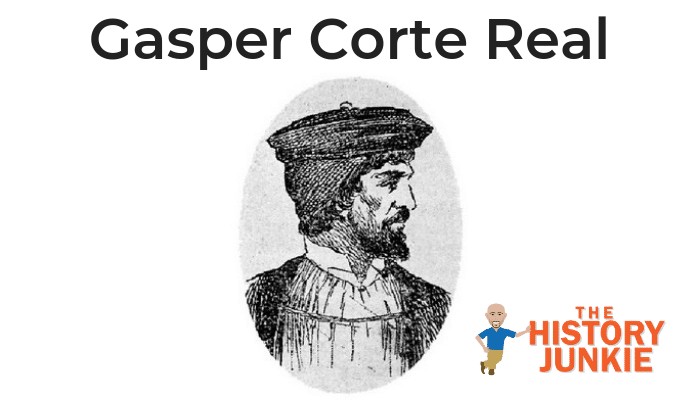Gasper Corte-Real was a Portuguese Explorer who participated in early Portuguese expeditions to find a Northwest Passage to Asia. It is believed that he was one of the first to reach Newfoundland and other parts of the northeast coast of Canada.

He, along with his brothers, Miguel Corte-Real and Vasco Anes Corte-Real, and other explorers such as Bartolomeu Dias and Vasco da Gama helped make the coastal nation of Portugal into a global empire by expanding their trade routes and discoveries.
Jump to:
Early Life and Education
The life of an explorer was familiar to Gasper since his father, João Vaz Corte-Real, was an explorer.
Due to his father's prominence in Portugal, Gasper and his brothers received one of the better educations that were available and had early experiences that helped forge their future as navigators.
While acquiring his education, Gasper lived in Lisbon, Portugal, where he served the Duke of Beja. This would be a fortunate relationship as the Duke of Beja would become King Manuel I of Portugal in 1491. He would go on to serve in King Manuel's court.
Christopher Columbus and John Cabot Impact
Portugal had begun amassing a trade empire. By the end of the 15th century, Bartolomeu Dias and Vasco da Gama had established a trade route around Africa to India.
However, the discoveries of Christopher Columbus and John Cabot made a significant impact on Europe. King Manuel began to hire explorers to search for a Northwest passage to Asia. This created an opportunity for the Core-Real brothers.
On May 12, 1500, Gasper Corte-Real received a charter from King Manuel to discover and claim jurisdiction in the New World.
He reached Greenland, believing it to be East Asia, but chose not to land. He set out on a second voyage to Greenland in 1501 with his brother Miguel Corte-Real and three caravels. Encountering frozen sea, they changed course to the south and reached land believed to be Labrador and Newfoundland.
There, they captured 57 native men, who would later be sold as slaves. Gaspar Corte-Real then sent his brother and two ships back to Portugal before continuing southwards.
Mysterious Death of the Corte-Real Brothers
Gasper was never heard from again after his 1501 expedition.
His brother Miguel was granted permission to try and find his brother. However, he also did not return.
The youngest brother, Vasco, was initially refused permission to search for his lost brothers by King Manuel but was eventually given the lands of Newfoundland, where he launched a third expedition to find his brothers. He was unsuccessful, and his brothers were never heard from again.
In 1918, a submerged stone was discovered by Professor Edmund Delabarre of Brown University.
The stone was inscribed with a Portuguese coat of arms and the name "Miguel Corte Real." It appears as though Miguel Corte-Real lived in North America for nine years after his disappearance.
